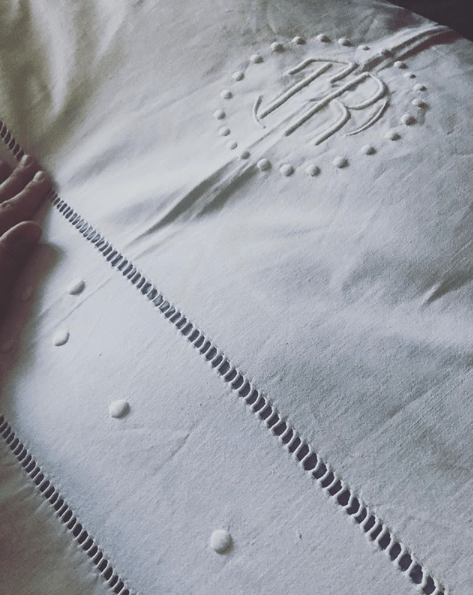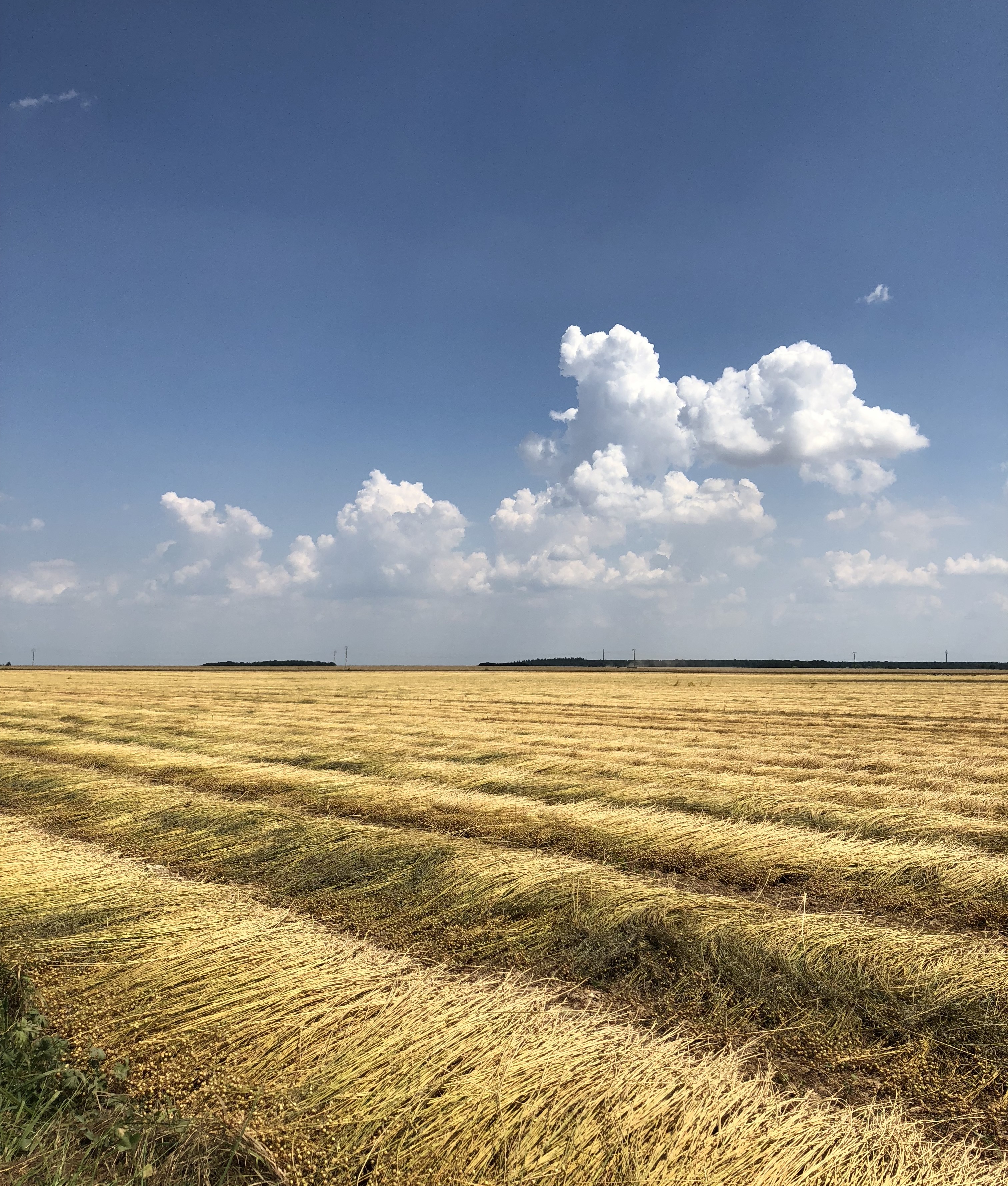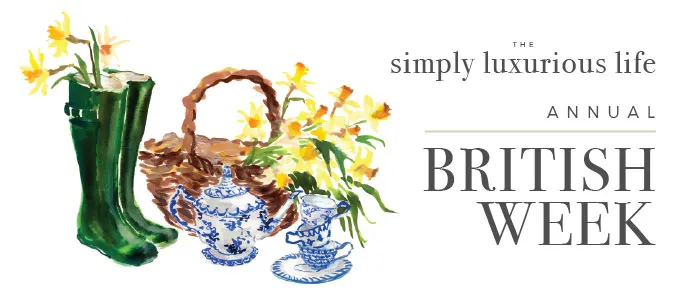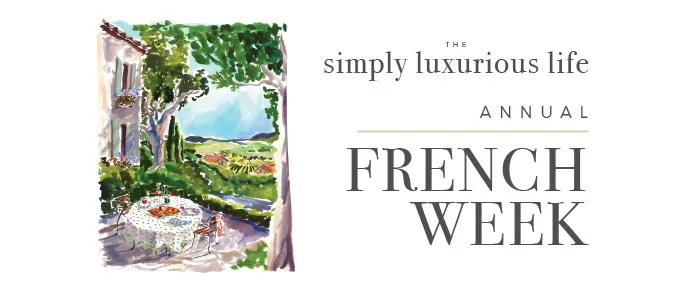Become a Member for as little as $4/mo and enjoy unlimited reading of TSLL blog.

Upon toodling around the countryside in Normandy in my rental car, and after guidance from a trusted French resource, I found French gold: fields of linen (aka flax).
Sharon Santoni was my teacher when it came to linen – the fabric, how to care for it, and where it comes from. And it was during a drive with her as we visited a brocante market early one Sunday morning that she pointed out a field of linen seen here.
Prior to the field being cut, the blooms are a brilliant French blue and only open for a short period of time during the day from about 10-2. I can only imagine such a beautiful sight, and look forward to returning in the late spring some time to see it in person.
What you see here in these images (as well as a video below) is a field of flax having been recently harvested and now let to rest for five weeks before being scooped up to be turned into all the magnificent linens (from the stalk), oils (from the seeds – linseed oil), and the seeds themselves (high in Omega-3 essential fatty acids – which is good for your heart and skin, as well as a source of fiber – learn more about the many health benefits).

Linen is indeed a luxury to bring into your daily life, and it is possible to do, pay a fair price and have an investment you will enjoy for more than just a few years.
Linen’s History
The history of linen is of the first fibre used to weave into fabric and dates back more than a few thousand years ago – Charlemagne anyone?? (and that was in the plant’s more recent history – learn more about the history and view an image of the flower here). Linen continued to be the fabric of choice during the 18th century and the Industrial Revolution until the United States began introducing machines to spin cotton that were much more affordable.
Environmentally Friendly
The finest linen is arguably from Normandy (seen in these images) and Belgium due to the climate and cooler temperatures. Interestingly enough, flax does not need to be irrigated, is a fully renewable resource and is completely biodegradable.
A short video of the fields of flax in Normandy
The Benefits of Sleeping & Wearing Linen
- hypo allergenic
- high air permeability and heat conductivity properties – in other words, due to its highly breathable properties, the fabric keeps you cool in the warm months and warm in the cool months
- Lasts far longer than cotton if cared for properly (I’ll share how to do this below)
- Approximately 30% stronger than cotton and holds its shape better than cotton due to the strong fibers.
- Becomes softer with each wash, and many state, it is only after 2-3 years that the fabric becomes the gem that people describe as the true luxury.
- Anti-static and can help soften and protect the skin as it has natural pH properties
- Extremely absorbant (absorbing as much as 20% of its weight in moisture before feeling wet – source) and repels dirt
French Vintage Linens vs New Linens
French vintage linens as Sharon Santoni had in her home and the cottage I stayed in (first image below) will require you to go treasuring hunting:
- brocante markets
- brocante boutiques
- online -eBay or Esty and other websites – check out a few on Esty here
However, for the latter on the list above, it is more difficult to determine true pure linen unless the source is trusted. Linen can be blended with cotton and passed off as linen sheets (as they do contain linen), but you will notice the difference quite instantly upon comparison as Sharon pointed out with my finds. A few were indeed pure linen whereas others were stiffer and contained more cotton. The drape of the sheet should be natural and quite fluid like liquid when you hold it in your hands, not like a paper napkin (but rather a linen napkin!).
Tips About Buying & Caring for Linen
- If purchasing vintage linen, make sure you open the entire sheet to see if there are holes or marks. Often the marks can come out, but you will either want to determine if you can darn (fix) the holes or pass on the sheet as it will only get worse with wear and wash.
- Vintage sheets are usually only large enough for a queen or double. If you find a sheet that has a seam down the middle, this is absolutely fine as it shows that they combined (usually hand-stitched) two smaller sheets together to preserve them.
- Often on vintage sheets you will see the family name on the bottom left or right edge as the sheets would be washed by the staff in a wash house along a river, and if the sheets were accidentially swept away or mixed up with other sheets, they would be able to determine whose sheet was whose.
- With vintage linen, the top sheet will contain most often a monogram (see in my image – 3rd below), and it is placed on the very top of the sheet (the top sheets are very long to enable you to fold back about 1-2 feet over the top of the blanket).
- Most vintage pillow cases are only sized for Euro (large square) or the long bolster pillow that lays behind the two Euro pillows (you can see how Sharon made the bed below with this approach). I saw oodles of bolster linen pillowcases at the brocante boutiques.
- Price for vintage linens at markets – the average I spent was 35-40 Euros (a sheet).
- Vintage French linens do not have available a fitted sheet; you simply use a flat sheet and tuck to fit.
- New linen French bedding makes available the standard pillowcases and fitted sheets we are accustomed to.
- Line dry only – preferrably outside under the sun as the sun will keep them white AND if you can, Sharon shared to lay them flat out on grass as the chlorophyll helps keep the sheets white as well.
- Yep, you will have to iron them, but your body will thank you with a deep sleep.



Where to Shop for Linen Sheets
Now you may be wondering, where do I shop for linen sheets?! Beyond visiting France or Belgium (or shopping on Esty, etc.), below are a few places to check out (but there are many more). As well, be sure to enter TSLL’s Linen Giveaway which just opened today sponsored by Soak & Sleep as a lucky winner will receive a full set of French linen sheets (not vintage) in the color of their choice (enter by August 18, 2018).
- Soak & Sleep (UK based company, and sources French and Belgium linen only)
- Apartment Therapy’s recommendation – Simple & Opulence Washed Linen Sheet Set
- Crane & Canopy Belgian Linen Sheet Set
- Bernadette Washed Sheet Set – from Wayfair
- Parachute Sleep Set (fitted and pillowcases)
- Brooklinen – well priced linen sheet sets
- Allswell – striped linen duvet cover
- Affordable linen Euro Pillowcases from Anthropologie
- Cultiver – Australian textile company which uses French flax to make their linens. Multiple colors in duvet covers, sheets and pillowcases.
- Quite the investment, but a trusted company – Matouk Linen Sheet Set

French Week 2018 – Posts So Far . . .
- Welcome to TSLL’s French Week & a Short Message from Shannon
- A Linen Giveaway from Soak & Sleep
- Claude Monet’s Giverny: My Time with the Famous Waterlilies and Those Copper Pots & Pans
- Cooking in Provence with Patricia Wells
TSLL’s 3rd Annual French Week continues through August 19th with at least two posts per day. À bientôt!
~Catch up on all of TSLL’s French-Inspired posts here and French-inspired podcast episodes here.



Shannon, thank you for this most interesting knowledge on linen. It makes me appreciate its value so much more,even though it was already a favorite in my closet.???☀️ Merci beaucoup Shannon
For me as well when I learned more about what made it such a worthwhile investment, I was immediately on board. So much of its construction, journey and value aligns with living well as well.
Amazon has a good selection, including European made, which are about 50 more than China made, but after reading the reviews it seem s they are worth it so I went with the European made.
I recently bought a sheet set from west elm and am very happy with them.
p.s. Also meant to say – excellent blog on French linen. A vintage sheet found in L’Isle sur la Sorgue is on our bed just now. Enjoy yours!
Jill, Isn’t L’Isle sur la Sorgue a wonderful brocante and food market on Sundays? What lovely find. Thank you for stopping by!
So lucky to have this very ancient and versatile plant in the fields right on our doorstep. So eco friendly. As you mentioned in your detailed description the flowers only open for a short while and are so pretty. A real delight to see. You HAVE to return to Normandy to see the flowers.Let’s celebrate and support French linen???
Love linen sheets too… my French grandmother introduced my to many delights such as these!
I truly enjoyed this post. So educational and inspiring! Thank you again Shannon!
Thanks for stopping by. I too enjoyed learning more about linen sheets. Makes them all the more wonderful to sleep on – more appreciation. 🙂
I have bought a house in the correze 7 years ago,
Covid took 2 and a half years away,so when we returned this year my joy at finding 6 huge sheets at the troc, monogrammed, plain white and lace so thick on one and one edged with pink roses, I can’t wait to have them on the beds when our visitors arrive.
Thank you Shannon for another wonderful post.
Thank you for stopping by Celine. 🙂 Tickled that you enjoyed and found helpful this post. Linen is such a wonderful sleep aid and a sustainable investment for long-term enjoyment. Have a wonderful weekend.